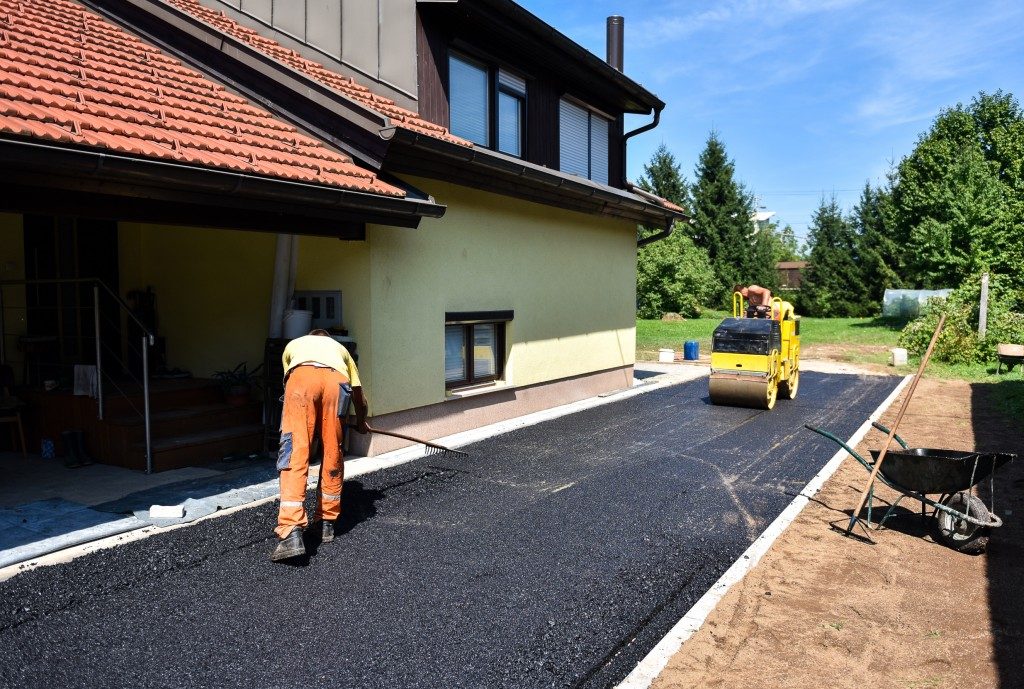Your asphalt driveway is one of the most worn-out parts of your home. It receives the brunt from your cars coming in and out of your property and from daily foot traffic. Over time, your asphalt driveway will show some signs of damage.
A damaged asphalt driveway is not only unpleasant to look at. It can also cause accidents and even damage your car. Be on the lookout for these signs that you need to call your contractor for commercial concrete repair.
1. You see cracks.
You might sometimes think that cracks are simple issues. However, cracks can multiply and expand over time. By the time you pay attention, it’s already too late and your driveway is rendered unusable.
Cracks usually begin to appear during the winter season, caused by the ice expanding and contracting. Small cracks not interconnected in your asphalt driveway can be repaired. However, once these cracks become deeper and wider, the issue becomes bigger. Water can seep in the cracks, causing more significant damage to your asphalt driveway. When you see alligator cracks, you will need to replace your asphalt driveway.
2. You see standing water.
Standing water is a sign of drainage issues. An ideal asphalt driveway is usually designed with a slope that will allow water to run off naturally. Over time, when your asphalt driveway is subjected to all the use and abuse, depressions can form where water can gather.
The presence of standing water and cracks is a dangerous combination for your asphalt driveway. The water can work its way beneath the top layer of your asphalt. During winter, these can cause bigger problems when the water freeze and thaw.
When you see drainage issues in your asphalt driveway, it might be time to call in for a replacement. It is a sign of structural deterioration that can cause bigger pavement problems if not treated.
3. There are potholes in your driveway.
Potholes in your asphalt driveway result from cracks left untreated. Potholes appear when the water that has seeped under the cracks expand and contract in the winter, making the cracks wider.
Potholes do not look very appealing and can be very dangerous. Anyone can trip on them and can result in injuries. You might be tempted to fill the potholes yourself with cold-mix asphalt. However, this is only a short-term solution that will not address the root of the problem. Cold-mix asphalt will not be able to fill small crevices and will still let some water seep in. This can lead to even more serious structural damage to your asphalt driveway.
4. Your asphalt driveway is raveling.
Asphalt is a combination of aggregates, binders, and fillers. The aggregates used are usually crushed rock, sand, slags, or gravel. Construction and demolition debris can also be used as aggregates. Raveling happens when the aggregates become loose from the binder. Some signs of raveling are loose pieces of asphalt on the surface or some pitting on the driveway.
Raveling can be repaired if treated immediately. However, when traveling is not addressed on time, larger pieces will start to break away from the binder. The surface of your asphalt driveway will become rougher and uneven.
5. You see multiple longitudinal or transverse cracks.

Longitudinal cracks run along the length of your asphalt driveway. Transverse cracks run across it. A few crack lines can be repaired by paving or filling your driveway. However, multiple crack lines mean that there is a severe issue with your driveway. These lines can also turn into alligator tracks if you ignore them. They also provide more opportunities for water to seep in your asphalt, damaging it more.
When your asphalt driveway has too many problems on top of the other, asphalt repair might no longer be reasonable or efficient. Asphalt replacement can effectively address any underlying issues in your driveway.
6. There are stains and fading areas.
When you see stains from car fluids and other chemicals, call your asphalt driveway professional immediately. These chemicals can eat away at the binding of your asphalt driveway.
Fading surfaces, on the other hand, are caused the asphalt’s exposure to the sun. Sealcoating can help repair fading, but sooner, you might need to call your asphalt surfacing contractor.
7. Your asphalt driveway is old.
Asphalt can last for years with proper care and maintenance. However, the older your driveway gets, the more vulnerable it is to asphalt damage. After 15 years, you might notice that your asphalt will be having more and frequent problems. At this point, addressing each issue by repair can be impractical, and it might be time to replace your asphalt driveway.
Maintaining the beauty of your asphalt driveway is necessary for the overall aesthetics of your home. However, more than the physical aspects, a well-maintained driveway is essential for your safety as well.

